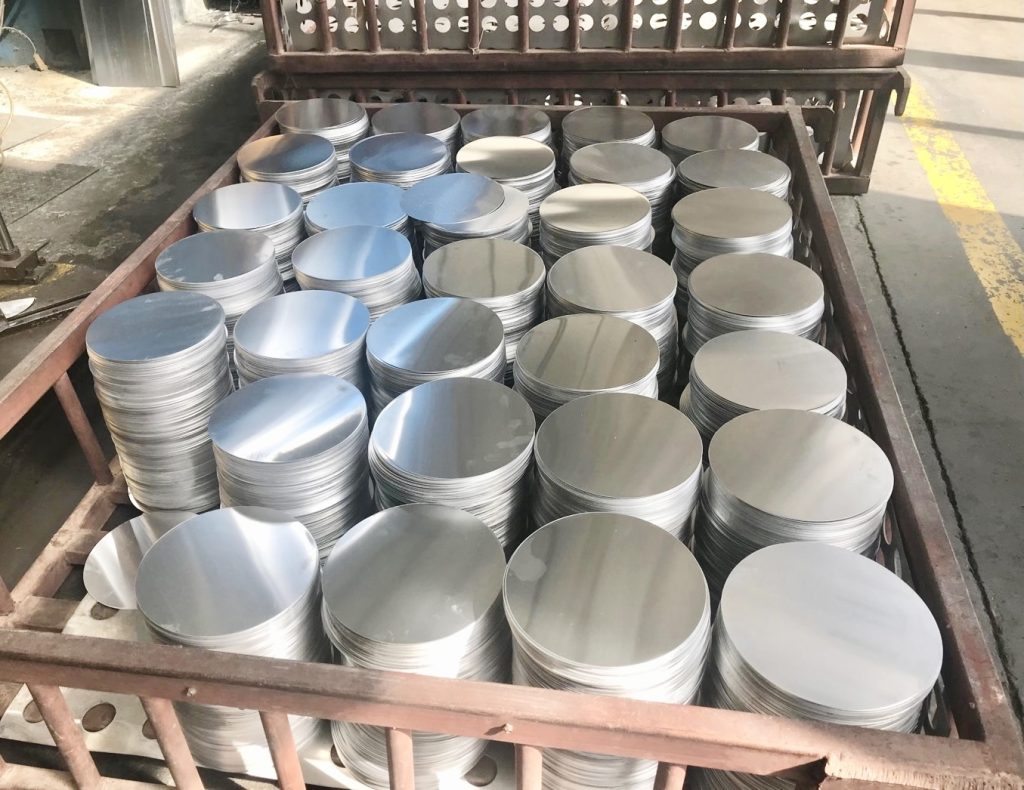Aluminum discs are essential metal materials widely used across various industries due to their lightweight, high strength, and excellent machinability. From food packaging to automotive manufacturing, aluminum discs are nearly ubiquitous. This article will delve into the sizes, standards, and diverse applications of aluminum discs, helping you better understand the importance and value of this material.

Sizes of Aluminum Discs
The size of aluminum circle is typically determined by their diameter, thickness, and tolerances. Different application requirements correspond to different standards and specifications. Here are the common size ranges:
1. Diameter
Small Diameter: Generally ranges from 20mm to 200mm. This size is often used for small component production, such as electrical fittings and sanitary equipment, making it suitable for space-constrained applications.
Medium Diameter: Ranges from 200mm to 500mm. Discs in this range are widely used for everyday items and industrial parts, such as beverage cans and electromechanical equipment, meeting more complex manufacturing needs.
Large Diameter: Typically 500mm or larger. These aluminum discs are used for large equipment components, such as construction materials and aerospace parts, capable of bearing greater weights and pressures.
2. Thickness
Thin Sheets: Ranging from 0.1mm to 1mm, suitable for lightweight and low-strength applications like disposable food packaging and aluminum foil, offering flexibility and easy processing.
Medium Thickness: From 1mm to 5mm, used in various standard applications like home appliance housings and automotive parts, providing sufficient strength and durability for everyday needs.
Thick Sheets: Typically over 5mm, primarily used for high-strength and durable applications such as structural supports in construction and heavy machinery components, offering higher load-bearing and impact resistance.
3. Tolerances
The tolerance for aluminum discs generally ranges from ±0.1mm to ±0.5mm, depending on specific application fields and industry standards. In high-precision industries like aerospace and medical equipment, strict tolerance control is crucial to ensuring product reliability and safety.
Application Categories of Aluminum Discs
Due to their excellent physical and chemical properties, aluminum discs are used in various fields. Below are some main application categories:
1. Packaging Industry
Aluminum circles are widely used in the packaging industry, primarily for manufacturing beverage cans and food packaging. Aluminum is lightweight and has good sealing properties, effectively preventing air and light from spoiling food, thus maintaining freshness and taste. Some beverages even undergo high-temperature sterilization in aluminum cans to ensure food safety.
2. Automotive Industry
In car manufacturing, aluminum discs are extensively used for producing automotive parts like wheels, bodies, and interiors. Aluminum components not only reduce vehicle weight but also improve fuel efficiency and performance. Additionally, aluminum’s corrosion resistance and high oxidation resistance make it a popular choice in the automotive sector.
3. Electronics
In the electronics industry, aluminum discs are used to manufacture heat sinks and appliance housings. The excellent heat dissipation properties of aluminum help quickly dissipate heat generated by devices, protecting electronic components’ stable operation. Aluminum also provides electromagnetic shielding, preventing external interference and enhancing device reliability.
4. Aerospace
The aerospace sector has strict requirements for material strength and weight. Aluminum discs are widely utilized for structural components, fuel tanks, and other critical parts of aircraft due to their high strength-to-weight ratio. In extreme environments, aluminum’s heat resistance and corrosion resistance make it a suitable choice.
5. Household Products
Aluminum discs are also commonly used in manufacturing kitchenware, furniture fittings, and other household items. Some cookware, lighting fixtures, and decorative materials use aluminum for its lightweight, ease of cleaning, and aesthetic appeal, meeting modern household needs.
6. Construction and Decoration
In the construction industry, aluminum discs are used for curtain walls, ceilings, and decorative materials. Aluminum’s weather resistance and oxidation resistance ensure the stability of building materials under harsh weather conditions while adding aesthetic value to structures.

Conclusione
In summary, aluminum discs are versatile materials that play a crucial role in modern industries due to their unique physical properties and wide range of applications. Understanding the sizes and application categories of aluminum discs can help in making informed choices in production and procurement. Whether in packaging, automotive, electronics, aerospace, or everyday life, aluminum discs are indispensable, and future market demand is expected to continue growing. Choosing aluminum discs reflects a commitment to quality and sustainable development.


